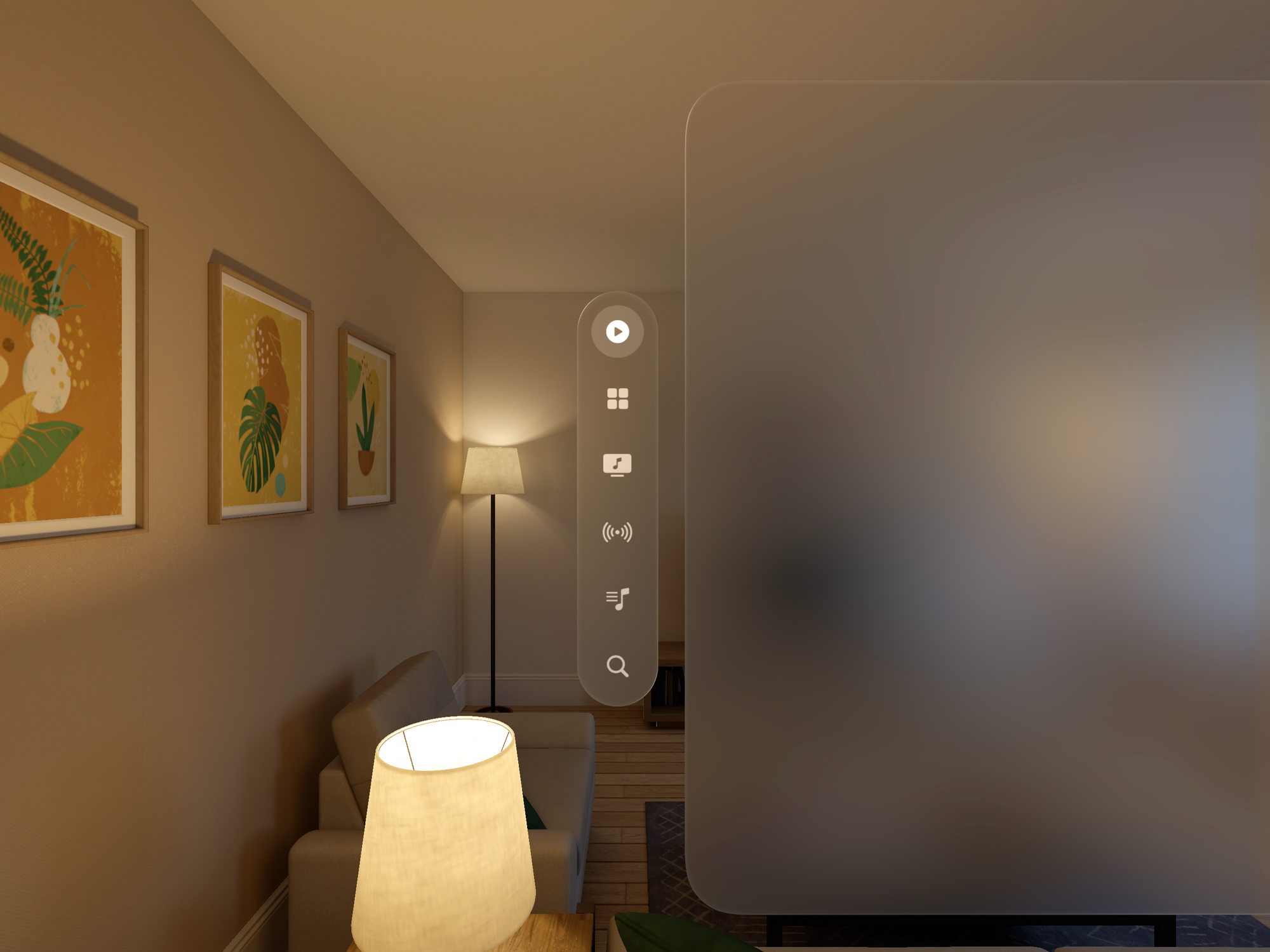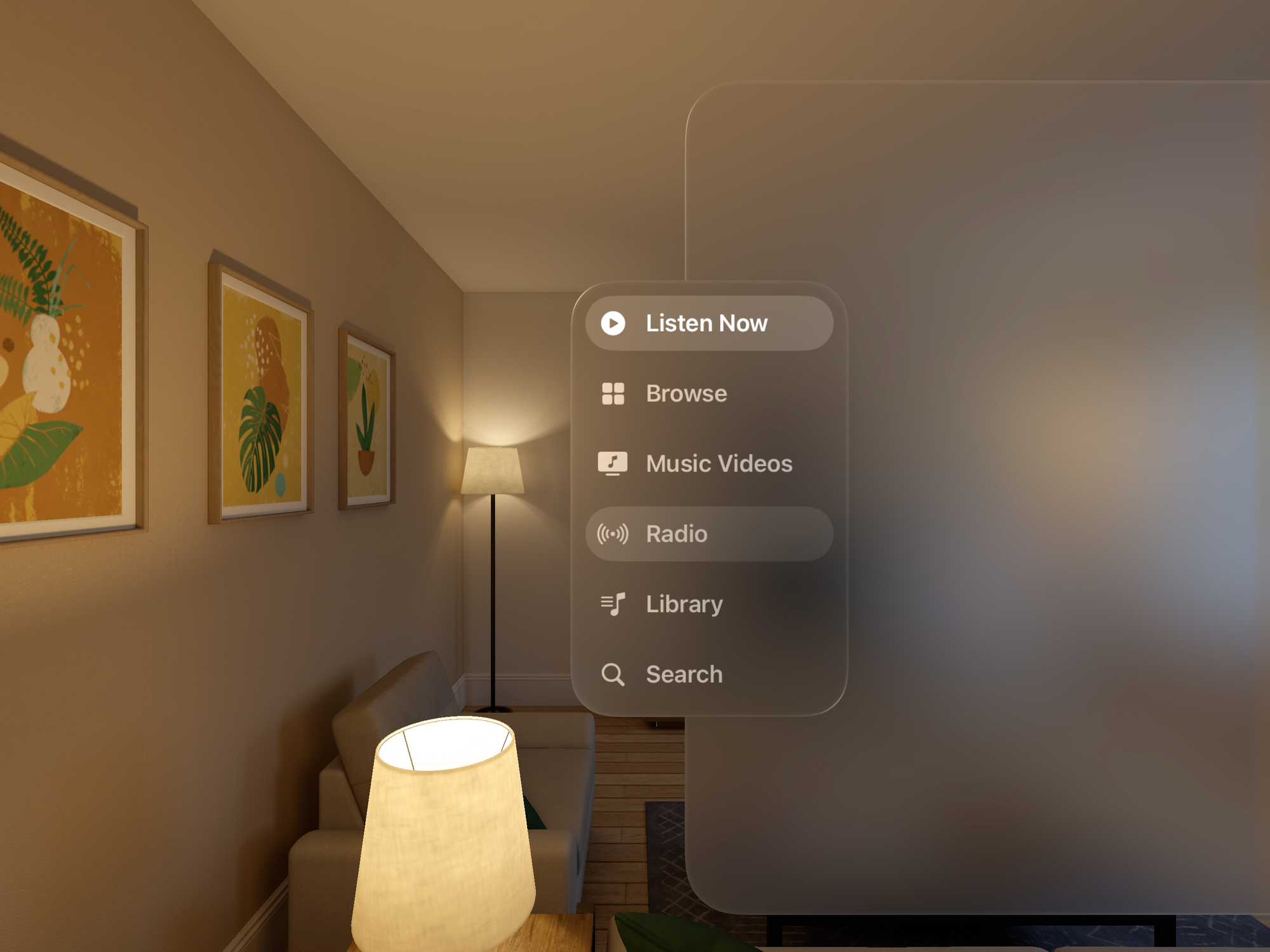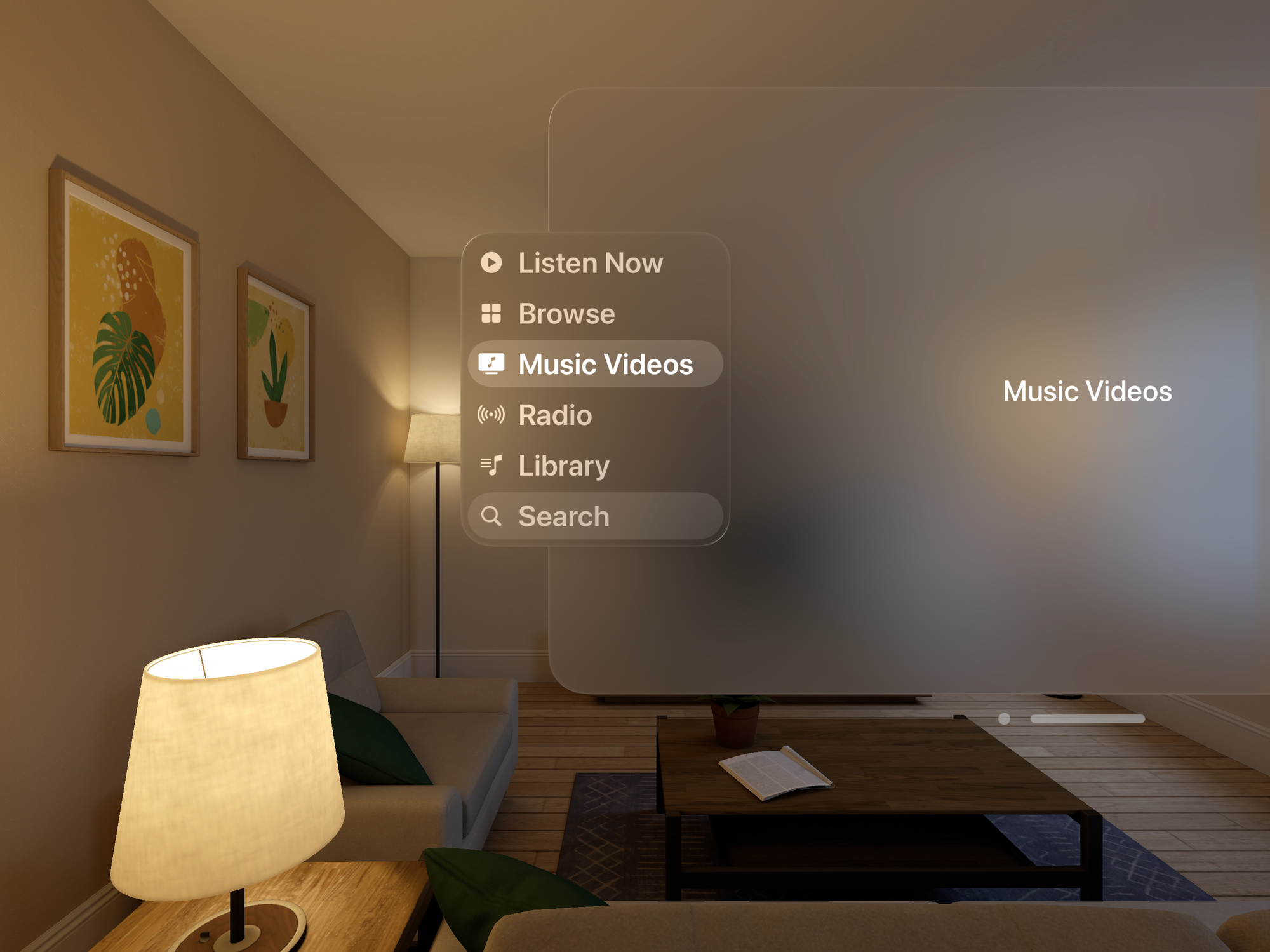I am building a sample music project exclusively for visionOS, for those who got my book, Exploring MusicKit and Apple Music API. This post covers working with TabView with SwiftUI in visionOS and how to make the most of it.
Working with TabView in SwiftUI
Like other platforms, you can use a TabView and pass a Hashable selection value to keep track of the current tab.
import SwiftUI
struct ContentView: View {
@State private var selectedTab: TabItem = .listenNow
var body: some View {
TabView(selection: $selectedTab) {
ForEach(TabItem.allCases, id: \.self) { tab in
Text(tab.name)
.tabItem {
Label(tab.name, systemImage: tab.image)
}
.tag(tab)
}
}
}
}
#Preview {
ContentView()
}
enum TabItem: CaseIterable {
case listenNow
case browse
case musicVideos
case radio
case library
case search
var name: String {
switch self {
case .listenNow: return "Listen Now"
case .browse: return "Browse"
case .musicVideos: return "Music Videos"
case .radio: return "Radio"
case .library: return "Library"
case .search: return "Search"
}
}
var image: String {
switch self {
case .listenNow: return "play.circle"
case .browse: return "square.grid.2x2"
case .musicVideos: return "music.note.tv"
case .radio: return "dot.radiowaves.left.and.right"
case .library: return "music.note.list"
case .search: return "magnifyingglass"
}
}
}While the code looks similar, the design of a TabView for visionOS is completely different from iOS. The vertical tab view hangs off or floats on the left side of the app, compared to the bottom on iOS. This view is what Apple calls as Ornaments. From the Human Interface Guidelines:
In visionOS, an ornament presents controls and information related to a window, without crowding or obscuring the window’s contents.
According to Apple designers, the idea is that it should not block the app's main content while still being quick to access when you need it.

Looking at the tab item for a little longer automatically expands to show the label for each item. For this reason, you should provide a symbol and a short text title for each tab.

If you look away, it automatically closes again to float and show icons only.
TabView and Accessibility Text Size
Increasing the font size to the largest accessibility text size does not affect the icon size, but the text label font size increases considerably.

Conclusion
As I continue exploring the world of visionOS, I enjoy the design elements it offers. The concept of "ornaments" is a prime example, providing a fresh approach to presenting controls and information within an app.
